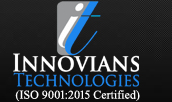MATLAB (matrix laboratory) is a multi-paradigm numerical computing environment and fourth-generation programming language. MATLAB is a high-performance language for technical computing.

MATLAB (matrix laboratory) is a multi-paradigm numerical computing environment and fourth-generation programming language. MATLAB is a high-performance language for technical computing.
It integrates computation, visualization, and programming in an easy-to-use environment where problems and solutions are expressed in familiar mathematical notation. Typical uses include: Math and computation. Algorithm development. Etc.
Topics to Be Covered:
Innovians Technologies (ISO 9001:2015 Certified) (A Unit of PRATS Technologies Pvt. Ltd.) is one of the best, leading & recognised training & services provider in the field of Workshops & Trainings, Corporate Training, Educational Tour, Consulting, Soft Skills Training.
We believe in Implementing New Ideas & Technology. Innovians Technologies is an ISO 9001:2015 Certified Company. We established in Year 2012 and in 2013 we registered as a Private Limited Company.
© 2025 coursetakers.com All Rights Reserved. Terms and Conditions of use | Privacy Policy